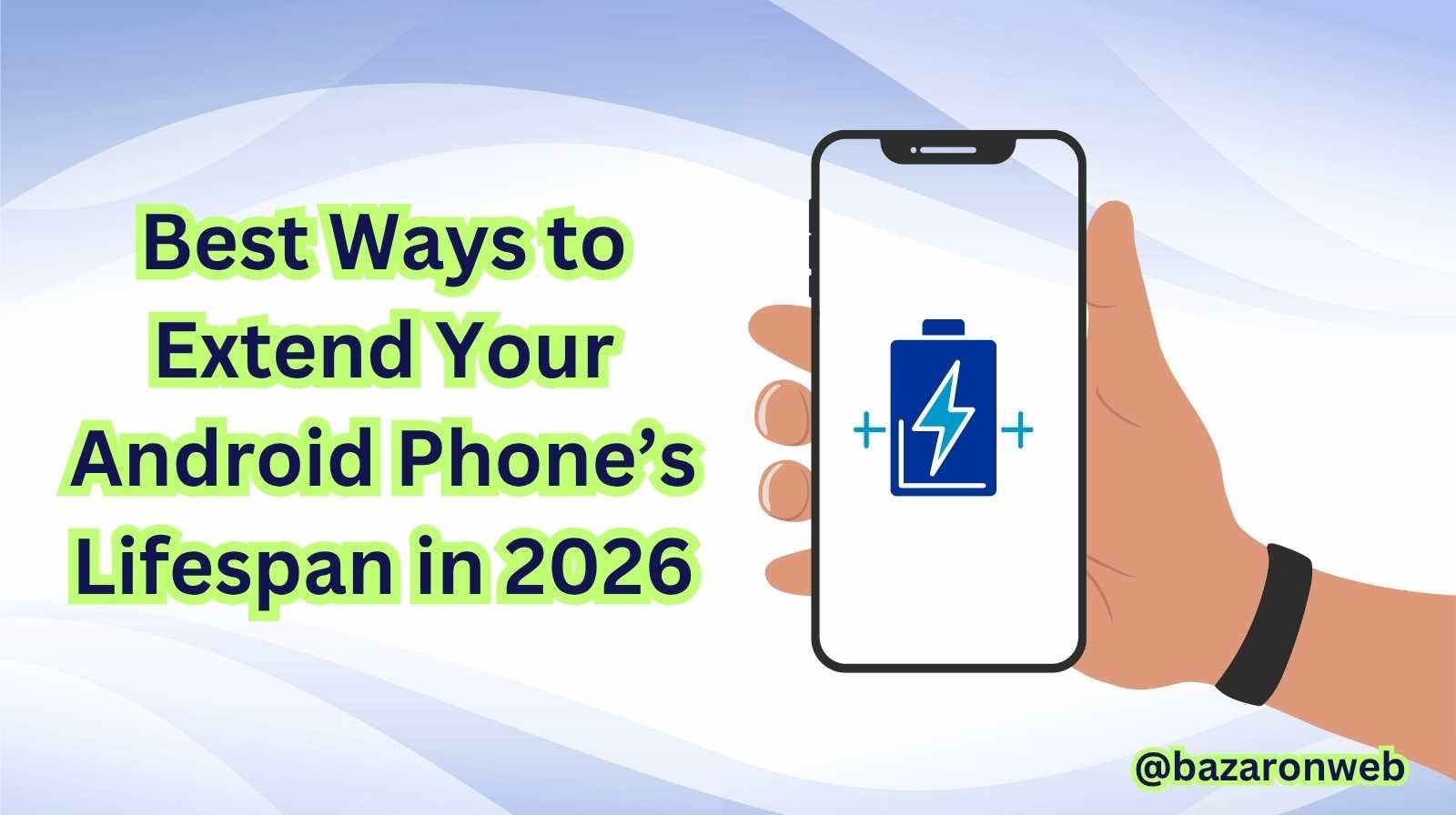Category
Popular Articles
- AI (12)
- Android (38)
- App Suggest (4)
- Apple (15)
- Apple TV (2)
- Bluetooth (3)
- Cars (2)
- ChatGpt (1)
- Chrome (2)
- Did you know? (1)
- E-Commerce News (1)
- Ecommerce Websites business (7)
- Electronics Shopping (5)
- Fashion Tips (3)
- Gaming (4)
- Google Gemini (3)
- Hair Care Tips (2)
- How to (13)
- iCloud (1)
- Infotainment System (1)
- Iphone (101)
- Job Posting (1)
- Lifestyle (3)
- Mac (20)
- Mobile Games (1)
- Netflix (1)
- Online Shopping Websites (2)
- Personal Finance Management (3)
- Product Reviews (3)
- Roku TV (4)
- Samsung (9)
- Shopping Tips (10)
- Spotify (1)
- Tech (92)
- Windows 11 (18)
- Zero Waste (3)
Discounted Products
-
 Leo Creation 144 TC Cotton Double Jaipuri Prints Flat Bedsheet(Pack of 1, Blue, Gree, Red, Grey, Light Grey)
Leo Creation 144 TC Cotton Double Jaipuri Prints Flat Bedsheet(Pack of 1, Blue, Gree, Red, Grey, Light Grey)
₹2,999.00Original price was: ₹2,999.00.₹329.00Current price is: ₹329.00. -
 Home Garage 210 TC Cotton King Floral Fitted (Elastic) Bedsheet(Pack of 1, Grey)
Home Garage 210 TC Cotton King Floral Fitted (Elastic) Bedsheet(Pack of 1, Grey)
₹999.00Original price was: ₹999.00.₹299.00Current price is: ₹299.00. -
 Goodrik 140 TC Cotton Double 3D Printed Flat Bedsheet(Pack of 1, Brown)
Goodrik 140 TC Cotton Double 3D Printed Flat Bedsheet(Pack of 1, Brown)
₹499.00Original price was: ₹499.00.₹229.00Current price is: ₹229.00. -
 GLOBALSHOP 350 TC Microfiber Double Floral Flat Bedsheet(Pack of 1, Multicolor)
GLOBALSHOP 350 TC Microfiber Double Floral Flat Bedsheet(Pack of 1, Multicolor)
₹1,250.00Original price was: ₹1,250.00.₹263.00Current price is: ₹263.00. -
 RisingStar 250 TC Microfiber King Printed Fitted (Elastic) Bedsheet(Pack of 1, FITTED-ROUND-CIRCLES-PREMIUM)
RisingStar 250 TC Microfiber King Printed Fitted (Elastic) Bedsheet(Pack of 1, FITTED-ROUND-CIRCLES-PREMIUM)
₹2,299.00Original price was: ₹2,299.00.₹299.00Current price is: ₹299.00. -
 Home Garage 210 TC Cotton King Floral Fitted (Elastic) Bedsheet(Pack of 1, Fitted Black Green)
Home Garage 210 TC Cotton King Floral Fitted (Elastic) Bedsheet(Pack of 1, Fitted Black Green)
₹1,299.00Original price was: ₹1,299.00.₹299.00Current price is: ₹299.00. -
 Home Garage 180 TC Cotton King 3D Printed Flat Bedsheet(Pack of 1, White)
Home Garage 180 TC Cotton King 3D Printed Flat Bedsheet(Pack of 1, White)
₹999.00Original price was: ₹999.00.₹229.00Current price is: ₹229.00. -
 Home Sizzler 153 cm (5 ft) Polyester Room Darkening Window Curtain (Pack Of 2)(Floral, Maroon)
Home Sizzler 153 cm (5 ft) Polyester Room Darkening Window Curtain (Pack Of 2)(Floral, Maroon)
₹799.00Original price was: ₹799.00.₹299.00Current price is: ₹299.00. -
 Panipat Textile Hub 152.4 cm (5 ft) Polyester Window Curtain (Pack Of 2)(Solid, Aqua)
Panipat Textile Hub 152.4 cm (5 ft) Polyester Window Curtain (Pack Of 2)(Solid, Aqua)
₹1,899.00Original price was: ₹1,899.00.₹299.00Current price is: ₹299.00. -
 Home Sizzler 214 cm (7 ft) Polyester Semi Transparent Door Curtain (Pack Of 2)(Floral, Maroon)
Home Sizzler 214 cm (7 ft) Polyester Semi Transparent Door Curtain (Pack Of 2)(Floral, Maroon)
₹1,199.00Original price was: ₹1,199.00.₹399.00Current price is: ₹399.00. -
 Home Sizzler 153 cm (5 ft) Polyester Room Darkening Window Curtain (Pack Of 2)(Floral, Brown)
Home Sizzler 153 cm (5 ft) Polyester Room Darkening Window Curtain (Pack Of 2)(Floral, Brown)
₹799.00Original price was: ₹799.00.₹299.00Current price is: ₹299.00. -
 Stella Creations 214 cm (7 ft) Polyester Room Darkening Door Curtain (Pack Of 2)(Abstract, Brown)
Stella Creations 214 cm (7 ft) Polyester Room Darkening Door Curtain (Pack Of 2)(Abstract, Brown)
₹1,299.00Original price was: ₹1,299.00.₹449.00Current price is: ₹449.00. -
 Homefab India 152.5 cm (5 ft) Polyester Room Darkening Window Curtain (Pack Of 2)(Floral, Light Blue)
Homefab India 152.5 cm (5 ft) Polyester Room Darkening Window Curtain (Pack Of 2)(Floral, Light Blue)
₹1,199.00Original price was: ₹1,199.00.₹319.00Current price is: ₹319.00. -
 Urban Home 214 cm (7 ft) PVC Transparent Door Curtain Single Curtain(Solid, Off White)
Urban Home 214 cm (7 ft) PVC Transparent Door Curtain Single Curtain(Solid, Off White)
₹699.00Original price was: ₹699.00.₹203.00Current price is: ₹203.00. -
 Panipat Textile Hub 213 cm (7 ft) Polyester Door Curtain (Pack Of 2)(Solid, Brown)
Panipat Textile Hub 213 cm (7 ft) Polyester Door Curtain (Pack Of 2)(Solid, Brown)
₹1,199.00Original price was: ₹1,199.00.₹349.00Current price is: ₹349.00.
Affiliate Links
Promotion

Hey friends, Jessica here. We all know the feeling: you bought an Android phone, it was blazing fast. Then a year or two later, things start to drag—apps load slower, battery drains faster, storage fills up, and you begin thinking about a new phone. But what if you didn’t need to upgrade so soon? What if you could keep your device running strong into 2026 and beyond?
Today I’m sharing the best ways to extend your Android phone’s lifespan—not just so it keeps working, but so it works well. Whether you’re using a flagship or a budget device, the same principles apply. Let’s dig into the tech and lifestyle habits that make a big difference.
1. Maintain Strong Battery Health
Battery is the beating heart of your phone. If that weakens, everything else slows down.
Tips:
- Enable Optimized Charging if your phone supports it. This reduces the time your battery spends at 100% charged.
- Avoid deep discharges. Try not to let your battery drop below 20–30% too often.
- Keep the phone cool. Heat is the battery’s worst enemy—avoid charging in hot places or leaving your phone in direct sun.
- Use quality chargers. Cheap or 3rd-party cables/blocks can cause voltage issues that degrade the battery faster.
- Limit charging overnight. If you consistently keep your phone at 100% all night, battery wear accelerates over time.
If you take care of your battery, you buy extra years of usable performance.
2. Keep the Software Fresh
One of the great advantages of modern Android phones is long-term updates. Take advantage of them.
Why it matters:
- System updates bring security patches, bug fixes, and performance improvements.
- Newer Android versions often optimize background tasks, reduce memory hogging, and improve battery life.
How to stay updated:
- Go to Settings → System → Software update and set automatic updates.
- Update apps regularly via Play Store—app developers still optimize for new OS versions.
- Enable monthly security patches.
A phone that’s kept up to date performs better and stays usable longer.
3. Manage Storage Smartly
Nothing kills phone performance quite like storage near 100%. Read/write speeds slow, apps hang, and system tasks get sluggish.
What to do:
- Keep at least 10–20% free storage for the system to work properly.
- Offload photos and videos to cloud storage (Google Photos, OneDrive) or an SD card if supported.
- Uninstall apps you haven’t used in months—Go to Settings → Apps → Last used to discover them.
- Clear cached files occasionally: Settings → Storage → Cached data.
By managing storage, you help your phone maintain speed and responsiveness for longer.
4. Be Gentle with Performance
Your phone doesn’t need to be pushed to extremes every day.
Good habits:
- Avoid using “Maximum Performance” mode all the time—especially if you don’t need it.
- Close heavy apps (gaming, video editing) when done. They leave residual processes running.
- Disable or uninstall bloatware & apps that you don’t trust or use.
- Use “Lite” versions of apps like Facebook Lite, Twitter Lite if your phone is mid-range or older.
- Avoid rooting or installing custom ROMs unless you’re tech-savvy—these can impact long-term stability and updates.
With moderate use, your phone will last more smoothly.
5. Protect it Physically
No software fix replaces good hardware care.
Suggestions:
- Use a screen protector (tempered glass) and a case—drops will happen.
- Avoid exposing it to extreme heat or moisture (hot car, sauna, heavy rain).
- Clean the ports (USB-C, headphone if present) occasionally—dust and lint cause connection issues or charging problems.
- Replace degraded battery when needed—many phones allow battery swap, and a fresh battery basically gives “new phone” feel.
By treating your phone well, you reduce the risk of sudden hardware failure.
6. Use Safe Connectivity Habits
Phones increasingly rely on Wi-Fi, Bluetooth, NFC, etc. Poor practices here shorten lifespan.
Safe habits:
- Turn off Wi-Fi, Bluetooth, GPS when not in use. Background scanning drains battery and triggers unnecessary wake-ups.
- Avoid charging via unknown USB ports (public kiosks) which may harm battery or hardware.
- Use VPN when on public Wi-Fi to protect data and prevent malicious apps from capitalizing on vulnerabilities.
- Avoid “fast-charging” constantly unless you need it—slower charging is gentler on battery over time.
Connectivity safety = longer life.
7. Regular Maintenance Checks
Just like you’d service a car, your phone benefits from routine checks.
What to include:
- Check Battery health (many phones now display battery health % in settings).
- Inspect Storage used and clear large unused files.
- Review App permissions: go to Settings → Privacy → Permission Manager. Revoke unused or risky permissions.
- Run a lightweight antivirus scan (Malwarebytes Mobile Security, Bitdefender) just to keep things clean.
- Monitor Performance mode vs Normal mode. If your phone feels sluggish, drop the performance governor.
Regular check-ups extend practical usability.
8. When to Consider Upgrading
Despite best care, there’s a natural lifespan for phones.
Upgrade signals:
- Your phone no longer receives security updates (older than 3-4 years).
- Battery health drops significantly (below ~85%).
- Latest apps require more RAM or processing than your device can realistically supply.
- Hardware support (cameras, connectivity) falls behind modern standards (5G, Wi-Fi 6E, etc.).
If you see multiple signs above, you might be better off upgrading—but the steps we’ve covered will help delay that decision while keeping your current phone solid.
Final Thoughts
Keeping your Android phone running smoothly into 2026 doesn’t require magic—just smart habits, consistent care, and some tech awareness. Battery health, storage management, updates, gentle use, and physical protection all add up.
If you adopt these practices now—whether you’re using a flagship or budget phone—you’ll get more years of use, better performance, and less frustration. Your phone isn’t just a purchase—it’s an investment. Treat it well, and it will serve you longer and better.
Until next time, keep things smooth, fast, and reliable.
— Jessica
Disclaimer:
This article is based on research, best practices, and trusted tech sources. Results may vary depending on your phone model, usage habits, and environment. Always back up your data before making major changes.
Would you like me to produce:
- A checklist PDF for “Extend Your Android Phone’s Lifespan”
- Product recommendations (chargers, cases, storage devices) with Amazon affiliate links
- A shorter social media version (Instagram/Twitter) of this article
Just say the word!
Written by Bazaronweb
Latest Tech Articles
- 5 Ways to Backup and Restore Registry Settings in Windows

- iMessage Not Syncing Between iPhone & Mac? 8 Proven Ways to Fix Account & Device Issues

- Outlook Not Receiving Emails? 8 Proven Fixes for Windows, Mac & Mobile

- Zoom Not Connecting? 7 Ways to Fix Meeting Join Errors on Windows & Mac

- Microsoft Teams Not Opening? 5 Proven Fixes to Restart Your Workspace

Products
-
![Apple Watch Ultra 3 [GPS + Cellular 49mm] Running & Multisport Smartwatch w/Rugged Titanium Case w/Black Titanium Milanese Loop - M. Satellite Communications, Advanced Health & Fitness Tracking](https://bazaronweb.com/retailstores/wp-content/uploads/2025/09/apple-watch-320x320.jpg) Apple Watch Ultra 3 [GPS + Cellular 49mm] Running & Multisport Smartwatch w/Rugged Titanium Case w/Black Titanium Milanese Loop - M. Satellite Communications, Advanced Health & Fitness Tracking
Apple Watch Ultra 3 [GPS + Cellular 49mm] Running & Multisport Smartwatch w/Rugged Titanium Case w/Black Titanium Milanese Loop - M. Satellite Communications, Advanced Health & Fitness Tracking
-
 Apple iPad mini (A17 Pro): Apple Intelligence, 8.3-inch Liquid Retina Display, 256GB, Wi-Fi 6E, 12MP Front/12MP Back Camera, Touch ID, All-Day Battery Life — Purple
Apple iPad mini (A17 Pro): Apple Intelligence, 8.3-inch Liquid Retina Display, 256GB, Wi-Fi 6E, 12MP Front/12MP Back Camera, Touch ID, All-Day Battery Life — Purple
-
 Apple AirPods Max Wireless Over-Ear Headphones, Active Noise Cancelling, Transparency Mode, Personalized Spatial Audio, Dolby Atmos, Bluetooth Headphones for iPhone – Space Gray
Apple AirPods Max Wireless Over-Ear Headphones, Active Noise Cancelling, Transparency Mode, Personalized Spatial Audio, Dolby Atmos, Bluetooth Headphones for iPhone – Space Gray
-
 Apple AirPods Pro 2 Wireless Earbuds, Active Noise Cancellation, Hearing Aid Feature, Bluetooth Headphones, Transparency, Personalized Spatial Audio, High-Fidelity Sound, H2 Chip, USB-C Charging
Apple AirPods Pro 2 Wireless Earbuds, Active Noise Cancellation, Hearing Aid Feature, Bluetooth Headphones, Transparency, Personalized Spatial Audio, High-Fidelity Sound, H2 Chip, USB-C Charging
-
 Leo Creation 144 TC Cotton Double Jaipuri Prints Flat Bedsheet(Pack of 1, Blue, Gree, Red, Grey, Light Grey)
Leo Creation 144 TC Cotton Double Jaipuri Prints Flat Bedsheet(Pack of 1, Blue, Gree, Red, Grey, Light Grey)
₹2,999.00Original price was: ₹2,999.00.₹329.00Current price is: ₹329.00.
Leave a Reply